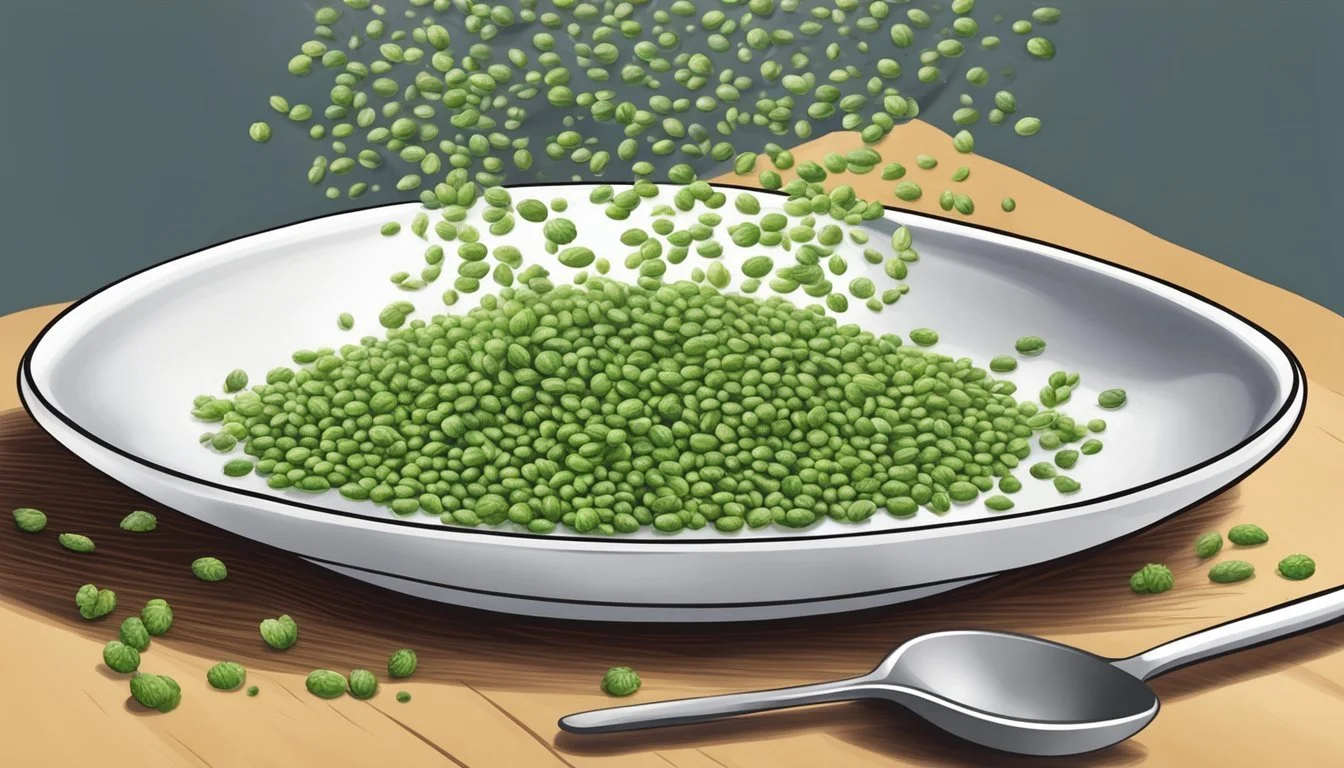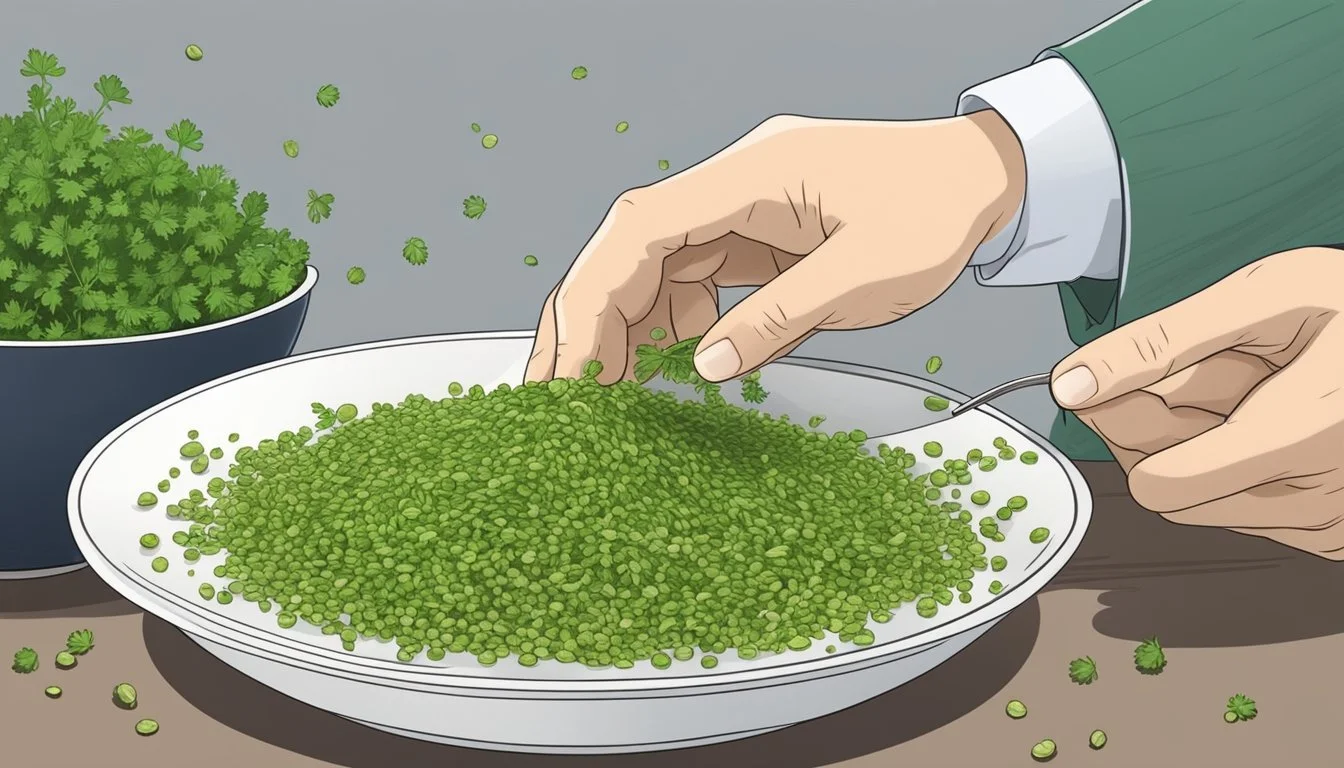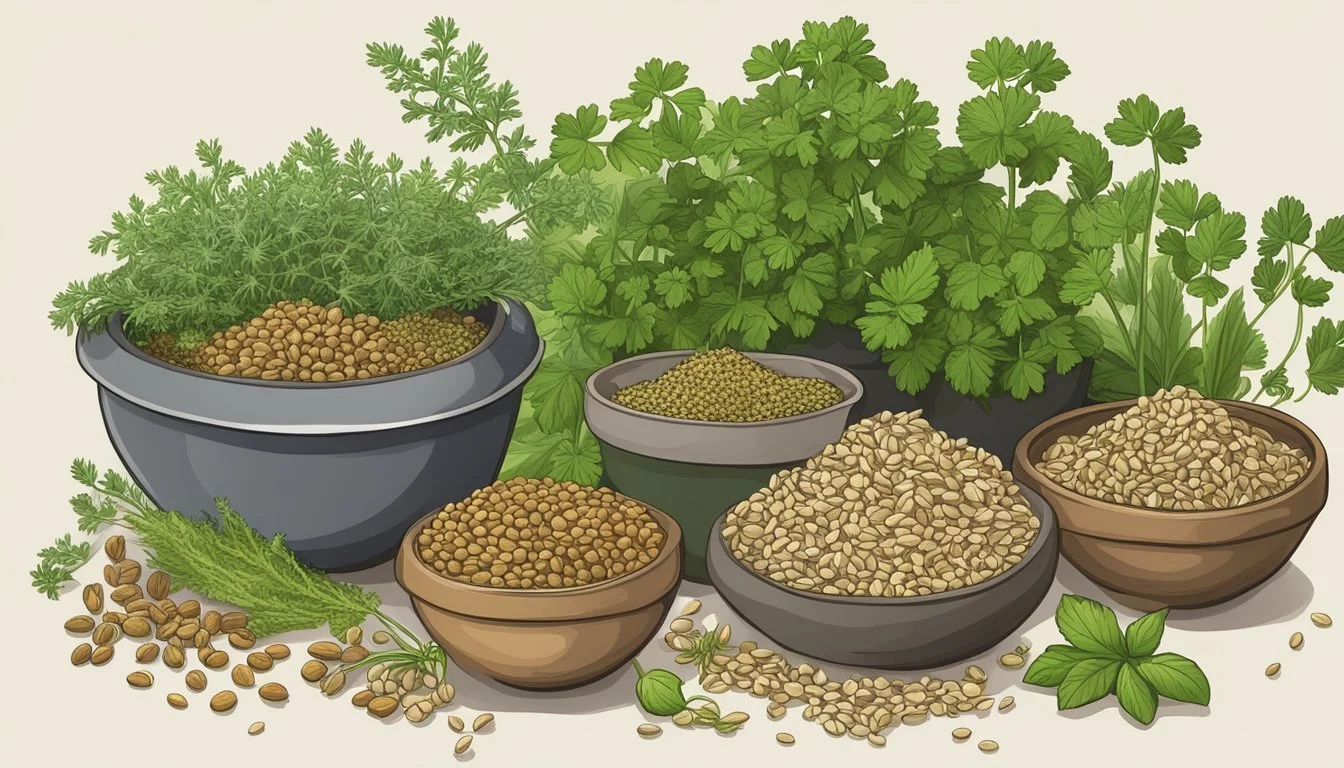Chervil Seeds Substitutes
Best Alternatives for Your Kitchen
Searching for a substitute for chervil seeds can be a challenge, especially for enthusiasts of French cuisine. Chervil seeds are prized for their mild, sweet flavor with a hint of anise, making them a unique ingredient in many dishes. Fortunately, several herbs can effectively replace chervil seeds while retaining the desired flavor profile.
Tarragon is an excellent alternative, offering a similar bittersweet taste with a subtle licorice undertone. Though a bit stronger, using it sparingly can mimic the delicate flavor of chervil in French dishes. Parsley, another member of the same family, provides a milder option. Combining it with a splash of lemon juice can enhance its subtle flavors, making it a versatile substitute.
Dill is another viable substitute, especially for recipes involving fish or sauces. Sharing the mild anise note, dill can replicate the essence of chervil seeds in soups and marinades. Mitsuba, or Japanese parsley, also aligns well with chervil's flavor and can be used in a variety of savory dishes, from stir-fries to curries.
Understanding Chervil
Chervil, a member of the parsley family, is a delicate herb often utilized in French cooking. Characterized by its mild, anise-like flavor, it is essential in various culinary applications.
Botanical Profile
Chervil (Anthriscus cerefolium) is an aromatic herb closely related to parsley. Originating from the Mediterranean region, it thrives in temperate climates and is often planted in spring or fall. The plant has fine, lacy leaves that resemble carrot tops, growing to about 12-24 inches tall. Chervil prefers partial shade and well-drained soil, making it a favorite in kitchen gardens. Its delicate nature necessitates careful handling, as the leaves can wilt quickly, even with the slightest mishandling.
Culinary Uses
In French cuisine, chervil is a key component of “fines herbes,” a classic herb blend that also includes parsley, tarragon, and chives. The herb’s tender leaves make it perfect for garnishing dishes or adding at the end of cooking to preserve its flavor. Chervil is often employed in sauces, soups, and salads to impart a mild, licorice-like touch. Due to its delicate flavor, it pairs exquisitely with eggs, fish, and light poultry dishes. The herb’s seasonal availability and tender nature lend itself best to fresh use rather than drying.
Flavor Characteristics
Chervil boasts a subtle, anise-like flavor with a mild licorice undertone, making it less overpowering than its relatives, tarragon and fennel. The herb’s delicate flavor is ideal for enhancing, rather than overshadowing, the natural taste of dishes. Its nuanced taste requires minimal cooking to maintain its aromatic properties. When fresh, chervil adds a springtime zest to culinary creations, embodying the light, refreshing qualities sought after in the culinary arts. Its subtlety and refinement make it a cherished choice in sophisticated recipes.
Common Chervil Substitutes
For those unable to find chervil seeds, several herbs can serve as effective replacements. These alternatives maintain a similar flavor profile and are often readily available in supermarkets.
Using Dill as a Substitute
Dill offers a distinct tangy flavor, making it a popular choice for substituting chervil. It pairs especially well with fish, chicken, and sauces. Though not identical, dill's mild anise undertone provides a somewhat bittersweet enhancement to dishes.
To substitute, use an equal amount of dill as you would chervil. Its fronds can also add a delicate texture when used fresh.
Tarragon: A Popular Alternative
Tarragon is known for its licorice-like flavor, which closely matches the subtle notes of chervil. It blends seamlessly into dishes like soups, marinades, and sauces. Chefs often prefer tarragon for its slightly stronger taste and its ability to complement fish and white meats such as chicken.
When using tarragon, start with half the amount called for chervil and adjust to taste, as its flavor can be more intense.
Parsley: Versatile and Available
Parsley is one of the most accessible herbs and can be found in most supermarkets. Though milder, it can be enhanced with a splash of lemon juice to mimic chervil's slight anise flavor. Parsley works well in a variety of dishes, providing a fresh and clean taste.
Use parsley in a 1:1 ratio when substituting for chervil. Its versatility makes it a reliable option for many recipes ranging from salads to marinades.
Fennel Fronds for Anise Flavor
Fennel fronds are an excellent choice for those seeking a chervil substitute with a prominent anise flavor. The fronds, which are the delicate green leaves of the fennel plant, impart a sweet, licorice-like taste that can enrich soups, salads, and fish dishes.
Use fresh or dried fennel fronds in a similar quantity to chervil. Due to its strong flavor, it is advisable to adjust the amount to suit your preference.
Specialty Substitutes
When looking to replace chervil seeds, certain specialty herbs provide unique flavors and are suitable choices. Each of these substitutes has distinct characteristics that cater to different culinary needs.
Anise for a Sweet Touch
Anise seeds offer a sweet, licorice-like flavor that can closely mimic the subtle anise flavor of chervil. This makes them an excellent substitute in dishes where a sweet undertone is desired.
They can be used in both sweet and savory recipes, adding a unique twist to desserts, baked goods, and certain sauces. Anise pairs particularly well with fennel and can enhance the complexity of spice blends. It’s advised to start with a small amount and adjust to taste, ensuring the sweet notes do not overpower the dish.
Chives for a Milder Taste
Chives provide a delicate, mild flavor, reminiscent of onions, which differs from chervil but still enhances many recipes. They are especially suitable for dishes requiring a lighter, less intrusive herb that adds a fresh touch.
Chives work well in salads, soups, and garnishes, offering a subtle, peppery note that does not dominate the dish. Their mild flavor excellently complements creamy dressings, potato dishes, and egg recipes. Due to their gentle taste, they can be generously used without the risk of overwhelming other flavors.
Cilantro for Zesty Flavors
Cilantro introduces a zestier, citrusy profile that can replace chervil in recipes leaning towards bolder, pungent flavors. This herb is particularly prominent in Latin American and Asian cuisines.
It excels in salsa, guacamole, and various marinades, delivering a bright, refreshing contrast. Cilantro leaves can be used fresh to garnish, bringing a citrus-like zing to the dish. Given its intense flavor, cilantro should be used thoughtfully to avoid overpowering more delicate ingredients. It brings a vibrancy that's hard to match, making it ideal for lively, robust dishes.
Non-Herbal Alternatives
Incorporating non-herbal alternatives to chervil can enrich dishes with unique flavors and nutritional benefits. These options cater to various recipes, providing versatility in cooking.
Vegetable Options
Vegetables offer a great substitute for chervil in many dishes. Spinach is a highly versatile vegetable that can be used in soups, salads, and egg dishes. It has a mild flavor that doesn’t overpower the dish and is available year-round.
Cauliflower provides a subtle taste and can be used in soups and stews. When roasted, it can bring a slight sweetness to the dish. Cauliflower is rich in vitamins and minerals, contributing to the nutritional value of the meal.
Carrots add a slight sweetness and crunch, perfect for salads and side dishes. They are also a fantastic source of antioxidants, vitamins A and K, and fiber. They enhance the visual appeal of dishes with their vibrant color.
Arugula: Peppery and Nutritious
Arugula is an excellent non-herbal substitute for chervil in salads and egg dishes. Known for its distinct peppery flavor, arugula can add a sharp taste to bland dishes, making them more exciting. It is best used fresh to preserve its flavor and nutritional properties.
Arugula is rich in vitamins A, C, and K, providing significant health benefits. It also contains minerals like potassium and calcium, essential for maintaining overall health. Arugula's seasonality aligns well with spring and summer, but it is often available throughout the year.
This leafy green pairs well with butter and other mild ingredients, creating a balanced and hearty meal. Its unique flavor profile makes it a standout ingredient in any dish.
Utilizing Dried Chervil
Dried chervil, often known as French parsley, offers an excellent alternative to the fresh variety, especially when fresh is unavailable. Its lacy leaves and subtle flavor make it a versatile addition to many dishes.
Comparison with Fresh Chervil
Dried chervil and fresh chervil differ mainly in texture and intensity. Fresh chervil, with its delicate, lacy leaves, provides a bright, slightly anisey flavor. Dried chervil, while still flavorful, has a more subdued taste and lacks the fresh herb's vibrant texture. Using the dried form typically involves a 1:1 ratio substitution, meaning one tablespoon of dried chervil can replace one tablespoon of fresh in recipes. However, some chefs suggest slightly increasing the amount of dried chervil to compensate for its milder flavor.
Recipes Best Suited for Dried Chervil
Dried chervil is best suited for recipes where it can be rehydrated and meld with other flavors. Soups, stews, and sauces benefit from its subtle enhancement. It's also useful in marinades, egg dishes, and various dressings. The dried herb's mild flavor blends well in these dishes without overpowering other ingredients. Additionally, dried chervil can be used as a last-minute garnish to add a hint of green and a touch of brightness to the finished dish. When using dried herbs like chervil, it is essential to consider the cooking time, as heat helps to release their flavors more effectively.
Creating Herb Mixes
Herb mixes can bring out the best in dishes by enhancing flavors and adding depth. Whether in a pesto or seasoning fish and seafood, substitutes for chervil play an important role in various recipes.
Making Pesto with Substitutes
When making pesto, basil is the traditional base herb. If chervil is unavailable, combining basil with tarragon or parsley can produce a similar flavor profile.
A pesto with tarragon adds a slightly sweet and licorice-like note, enhancing the herbal quality. For a milder flavor, parsley works well to complement and balance the richness of the dish. Using these substitutes, create a pesto with:
2 cups fresh basil leaves
1/4 cup fresh tarragon or parsley
1/2 cup grated Parmesan cheese
1/3 cup pine nuts
3 cloves garlic
1/2 cup extra-virgin olive oil
Salt and pepper to taste
Mixing these ingredients in a food processor will yield a vibrant and aromatic pesto, perfect for dressings or complementing a variety of French dishes.
Herbs for Fish and Seafood
For preparing fish and seafood, dill serves as an excellent substitute for chervil, offering a slight anise flavor that pairs well with marine flavors.
In dressings or sauces like béarnaise sauce or ravigote sauce, dill or a blend of parsley and a touch of lemon juice can enhance the dish's bright, tangy profile. When seasoning, use:
1 tablespoon fresh dill or dill leaves
1 tablespoon fresh parsley
Juice of half a lemon
Salt, pepper, and garlic to taste
This combination works wonderfully in marinades for seafood or in a light oyster sauce for additional depth. It ensures that even without chervil, the dishes retain their intended aromatic complexity and freshness.
Chervil in French Cooking
Chervil, a delicate herb with a subtle anise-like flavor, is a staple in French cuisine. It is commonly included in fines herbes, a classic French herb blend. This mixture typically contains chervil, tarragon, chives, and parsley.
French chefs often use chervil to season a variety of dishes, such as soups, salads, and sauces. It is especially prevalent in egg dishes like omelets and quiche.
In addition to fines herbes, chervil is a key ingredient in the French herb blend called bouquet garni. This blend is usually used to flavor stocks, soups, and stews. While chervil is the star, other herbs like parsley and tarragon also contribute to the bouquet's distinctive flavor.
Chervil pairs well with poultry, fish, and vegetables. It imparts a mild, sweet taste that enhances but does not overwhelm delicate flavors. Its leaves are often added at the end of cooking to maintain their bright green color and nuanced taste.
Chefs sometimes choose Italian parsley or cicely as substitutes for chervil when it is unavailable. Italian parsley has a stronger flavor but can serve a similar purpose in garnishing and seasoning. Cicely, with its slight licorice undertone, can mimic chervil's unique flavor aspects in some recipes.
In traditional French cooking, chervil is indispensable. Its subtlety and aromatic quality bring out the best in a dish without overpowering it. Therefore, whether in simple dishes or complex culinary creations, chervil remains a cherished ingredient in French kitchens.








